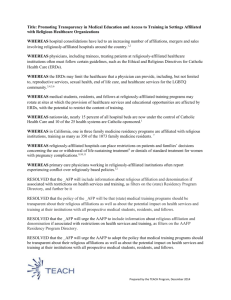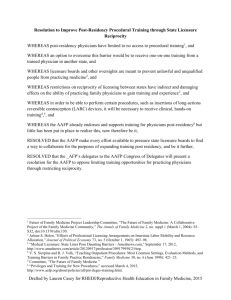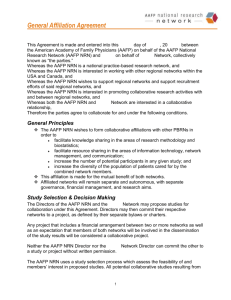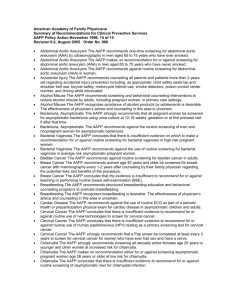Transparency in Medical Education
advertisement
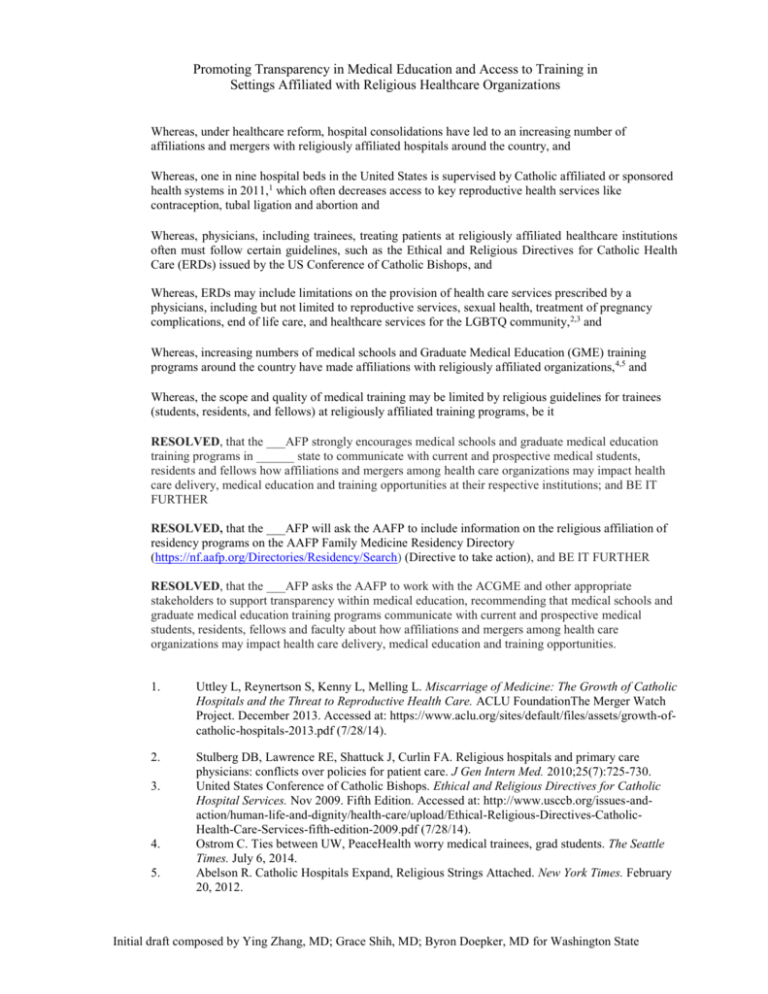
Promoting Transparency in Medical Education and Access to Training in Settings Affiliated with Religious Healthcare Organizations Whereas, under healthcare reform, hospital consolidations have led to an increasing number of affiliations and mergers with religiously affiliated hospitals around the country, and Whereas, one in nine hospital beds in the United States is supervised by Catholic affiliated or sponsored health systems in 2011,1 which often decreases access to key reproductive health services like contraception, tubal ligation and abortion and Whereas, physicians, including trainees, treating patients at religiously affiliated healthcare institutions often must follow certain guidelines, such as the Ethical and Religious Directives for Catholic Health Care (ERDs) issued by the US Conference of Catholic Bishops, and Whereas, ERDs may include limitations on the provision of health care services prescribed by a physicians, including but not limited to reproductive services, sexual health, treatment of pregnancy complications, end of life care, and healthcare services for the LGBTQ community, 2,3 and Whereas, increasing numbers of medical schools and Graduate Medical Education (GME) training programs around the country have made affiliations with religiously affiliated organizations, 4,5 and Whereas, the scope and quality of medical training may be limited by religious guidelines for trainees (students, residents, and fellows) at religiously affiliated training programs, be it RESOLVED, that the ___AFP strongly encourages medical schools and graduate medical education training programs in ______ state to communicate with current and prospective medical students, residents and fellows how affiliations and mergers among health care organizations may impact health care delivery, medical education and training opportunities at their respective institutions; and BE IT FURTHER RESOLVED, that the ___AFP will ask the AAFP to include information on the religious affiliation of residency programs on the AAFP Family Medicine Residency Directory (https://nf.aafp.org/Directories/Residency/Search) (Directive to take action), and BE IT FURTHER RESOLVED, that the ___AFP asks the AAFP to work with the ACGME and other appropriate stakeholders to support transparency within medical education, recommending that medical schools and graduate medical education training programs communicate with current and prospective medical students, residents, fellows and faculty about how affiliations and mergers among health care organizations may impact health care delivery, medical education and training opportunities. 1. Uttley L, Reynertson S, Kenny L, Melling L. Miscarriage of Medicine: The Growth of Catholic Hospitals and the Threat to Reproductive Health Care. ACLU FoundationThe Merger Watch Project. December 2013. Accessed at: https://www.aclu.org/sites/default/files/assets/growth-ofcatholic-hospitals-2013.pdf (7/28/14). 2. Stulberg DB, Lawrence RE, Shattuck J, Curlin FA. Religious hospitals and primary care physicians: conflicts over policies for patient care. J Gen Intern Med. 2010;25(7):725-730. United States Conference of Catholic Bishops. Ethical and Religious Directives for Catholic Hospital Services. Nov 2009. Fifth Edition. Accessed at: http://www.usccb.org/issues-andaction/human-life-and-dignity/health-care/upload/Ethical-Religious-Directives-CatholicHealth-Care-Services-fifth-edition-2009.pdf (7/28/14). Ostrom C. Ties between UW, PeaceHealth worry medical trainees, grad students. The Seattle Times. July 6, 2014. Abelson R. Catholic Hospitals Expand, Religious Strings Attached. New York Times. February 20, 2012. 3. 4. 5. Initial draft composed by Ying Zhang, MD; Grace Shih, MD; Byron Doepker, MD for Washington State
